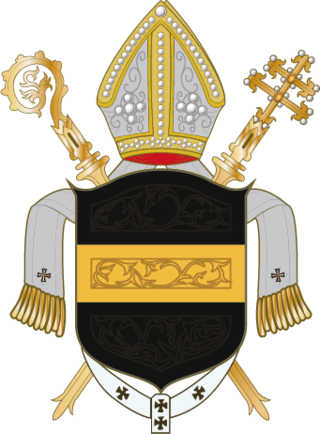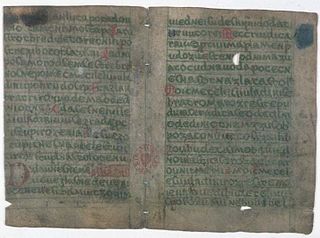
Terezín is a town in Litoměřice District in the Ústí nad Labem Region of the Czech Republic. It has about 2,900 inhabitants. It is a former military fortress composed of the citadel and adjacent walled garrison town. The town centre is well preserved and is protected by law as an urban monument reservation. Terezin is most infamously the location of the Nazis' notorious Theresienstadt Ghetto.

Hradec Králové is a city of the Czech Republic. It has about 94,000 inhabitants. It is the capital of the Hradec Králové Region. The historic centre of Hradec Králové is well preserved and is protected by law as an urban monument reservation, the wider centre is protected as an urban monument zone.

Josef Kajetán Tyl was a significant Czech dramatist, writer, and actor. He was a notable figure in the Czech National Revival movement and is best known as the author of the current national anthem of the Czech Republic titled Kde domov můj?.

Opočno is a town in Rychnov nad Kněžnou District in the Hradec Králové Region of the Czech Republic. It has about 3,100 inhabitants. Opočno is known for the Opočno Castle, one of the most magnificent examples of Renaissance architecture in Bohemia. The historic town centre with the castle is well preserved and is protected by law as an urban monument zone.
This article deals with historic administrative divisions of Czechoslovakia up to 1992, when the country was split into the Czech Republic and Slovakia.

Jan Kotěra was a Czech architect, artist and interior designer, and one of the key figures of modern architecture in Bohemia.

Dobruška is a town in Rychnov nad Kněžnou District in the Hradec Králové Region of the Czech Republic. It has about 6,600 inhabitants. The town is known as the birthplace of Czech patriotic writer František Ladislav Hek, whose career was described in Alois Jirásek's novel F. L. Věk. The historic town centre is well preserved and is protected by law as an urban monument zone.

The Archdiocese of Prague (Praha) (Latin: Archidioecesis Pragensis; Czech: Arcidiecéze pražská) is a Metropolitan Latin archdiocese of the Catholic Church in Bohemia, in the Czech Republic.

The Dvůr Králové and Zelená Hora manuscripts are literary hoaxes purporting to be epic Slavic manuscripts written in Old Czech. They first appeared in the early 19th century.

Boni Pueri is a Czech boys' choir founded in 1982, which has become one of Europe's most famous musical ensembles.

Nehvizdy is a market town in Prague-East District in the Central Bohemian Region of the Czech Republic. It has about 4,400 inhabitants.
Hvězda zvaná Pelyněk is a 1964 Czech drama film written and directed by Martin Frič. It depicts the events of 1918 mutiny of Czech soldiers serving in the Austro-Hungarian army in Rumburk garrison.
The cultural monuments of the Czech Republic are protected properties designated by the Ministry of Culture of the Czech Republic. Cultural monuments that constitute the most important part of the Czech cultural heritage may be declared national cultural monuments by a regulation of the Government of the Czech Republic. Government may also proclaim a territory, whose character and environment is determined by a group of immovable cultural monuments or archaeological finds, as a whole, as a monument reservation. Ministry of Culture may proclaim a territory of a settlement with a smaller number of cultural monuments, historical environment or part of a landscape area that display significant cultural values as a monument zone.

Alois Machek was a Czech football player and coach. Considered by Czech historiographers as one of the best Czech players prior First World War, he was responsible for the popularization of football in Serbia and Yugoslavia during the first two decades of the 20th century.
The 2014–15 season was Dukla Prague's fourth consecutive season in the Czech First League. In August 2014 the club released new burgundy and yellow home and away shirts, the first time the club had burgundy as their home colour since the 1970s.
The 2017–18 Czech Cup, known as the MOL Cup for sponsorship reasons, was the 25th season of the annual knockout football tournament of the Czech Republic. It began with the preliminary round in July 2017 and is due to end with the final in May 2018. The winner of the cup will gain the right to play in the group stage of the 2018–19 UEFA Europa League.
The 2016–17 season was Dukla Prague's sixth consecutive season in the Czech First League.

The National Bank of Czechoslovakia was the central bank of Czechoslovakia between 1926 and 1939, succeeding the Austro-Hungarian Bank after a 6-year interval during which central banking functions were assumed directly by the country’s ministry of finance.
Šumná města is a Czech documentary series, broadcast during period 1995–2008 by Czech Television. It is about the modern architecture of Czech cities. The author and director was Radovan Lipus, with whom David Vávra, who accompanied the entire cycle as a commenting architect, did not get along on the script.


















